Our view at Stack - Pipedrive is a robust CRM platform, offering automation, contact data collection, webhooks, AI-powered sales assistant, email communications, email marketing, and customisable sales pipeline workflows.
Growing a small business requires skillful leadership. You must build a loyal customer base, minimize risk and keep your team engaged.
In this article, you’ll learn what effective small business management entails, which skills you need and how to build a value-first company that engages buyers and staff continuously.
What is small business management (and why is it important)?
Small business management involves coordinating and overseeing every aspect of a company to ensure it meets all goals and its operations run smoothly.
It includes planning, organizing and controlling all the company’s resources and activities:
| Resources | Activities |
| Finances | Supply chain management |
| Talent | Sales and customer relationship management (CRM) |
| Technology and infrastructure |
Partnerships |
| Inventory | Research and product development (R&D) |
| Intellectual property | Legal and regulatory compliance |
| Facilities and equipment | Human resources (HR) |
| Data and information |
For many small businesses, management is often one person’s job (e.g., an owner or founder). However, some larger small businesses have management teams that share responsibilities (e.g., HR managers and sales leaders).
Effective big-picture management is crucial for small businesses since it impacts their ability to survive, compete and grow in challenging market environments. Without it, companies can struggle with inefficiency, poor decision-making and, ultimately, failure.
For example, an e-commerce store owner who manages inventory, customer service and business finances efficiently is more likely to meet customer needs promptly and maintain a healthy cash flow.
Without effective management, the store might face stock shortages, customer dissatisfaction and financial strain, leading to potential closure.
Note: The U.S. Small Business Administration (SBA) defines a small business as an independent company with fewer than 500 employees, including individual contractors (or solopreneurs). Organizations fitting this criteria account for 99.9% of American companies.
The key benefits of effective small business management
Strong small business management doesn’t just ensure survival; it helps companies thrive. Here are the key business benefits of effective management:
-
Predictability. Establishing transparent processes and procedures puts your company on a more predictable trajectory. Consistency helps teams forecast performance, manage risks and make informed decisions.
-
Resilience. Solid organizational structures with consistent processes help your business overcome market fluctuations and economic downturns, ensuring long-term stability and growth.
-
Flexibility. Effective management means staying responsive to market changes and customer needs. It allows your business to pivot strategies and innovate while remaining competitive in dynamic and uncertain environments.
-
Financial success. Proper accounting ensures efficient resource use, cost control and strategic financial planning. It leads to improved profitability, sustainable growth and the financial freedom to invest in new business opportunities.
-
Employee satisfaction. Clear communication, fair policies and opportunities for professional development spur employees to be more engaged and loyal. The result is a more productive work environment and better business outcomes.
Recommended reading

Understanding high-performance work systems (and how to build one)
What does a small business manager do?
A small business manager is responsible for most or all of a company’s day-to-day operations.
Although some small business managers delegate work to colleagues or other managers, their duties generally include:
-
Managing staff
-
Overseeing financial activities
-
Developing business strategies
-
Ensuring customer satisfaction
-
Handling administrative tasks
Many company founders (or entrepreneurs) become business managers by default. However, hiring and overseeing dedicated business managers for the role is also possible, which means the terms “founder” and “small business manager” aren’t interchangeable.
Some small business managers are also their companies’ chief executive officers (CEOs) or directors, but the terms aren’t interchangeable as the roles have slightly different descriptions.
Here are those terms in more detail:
|
Founder (or small business owner) |
An individual who creates and establishes a company (i.e., entrepreneurship). They are responsible for developing the initial business plan, securing funding and setting the company’s vision and culture. Critical skills for founders include innovation, risk-taking and the ability to drive early-stage growth. |
| CEO |
The top executive responsible for the company’s overall strategic direction and operational management. They oversee major business decisions, manage resources and communicate with directors (where present). Essential CEO skills include strategic vision, leadership and financial acumen. |
| Director |
A director is a senior company leadership team member (or board), typically responsible for general governance and oversight. They provide strategic guidance, ensure legal or regulatory compliance and represent shareholder interests. Key skills for directors include strategic thinking, regulatory knowledge, risk management and strong communication. |
| Small business manager |
A person who oversees the day-to-day operations of a small business. Responsibilities include managing staff, budgeting, marketing and ensuring operational efficiency. Valuable skills include team leadership, time management, customer service, problem-solving and operational management. |
Generally speaking, the smaller a business is, the more likely it is that one person will fill more than one leadership position.
Recommended reading

11 profitable small business ideas for aspiring entrepreneurs in 2023
5 small business management qualities to work on
Good business management requires particular skills and characteristics. To lead your team to success, work on the following personal attributes.
Clear communication
Clear communication ensures everyone understands their roles, responsibilities and company goals. By minimizing confusion with simple instructions and a willingness to listen, you’ll improve team focus and enable staff to be more productive.
In a Grammarly study, 72% of business leaders said effective communication positively impacted productivity, 63% said it helped customer satisfaction and 60% agreed it increased employee confidence.
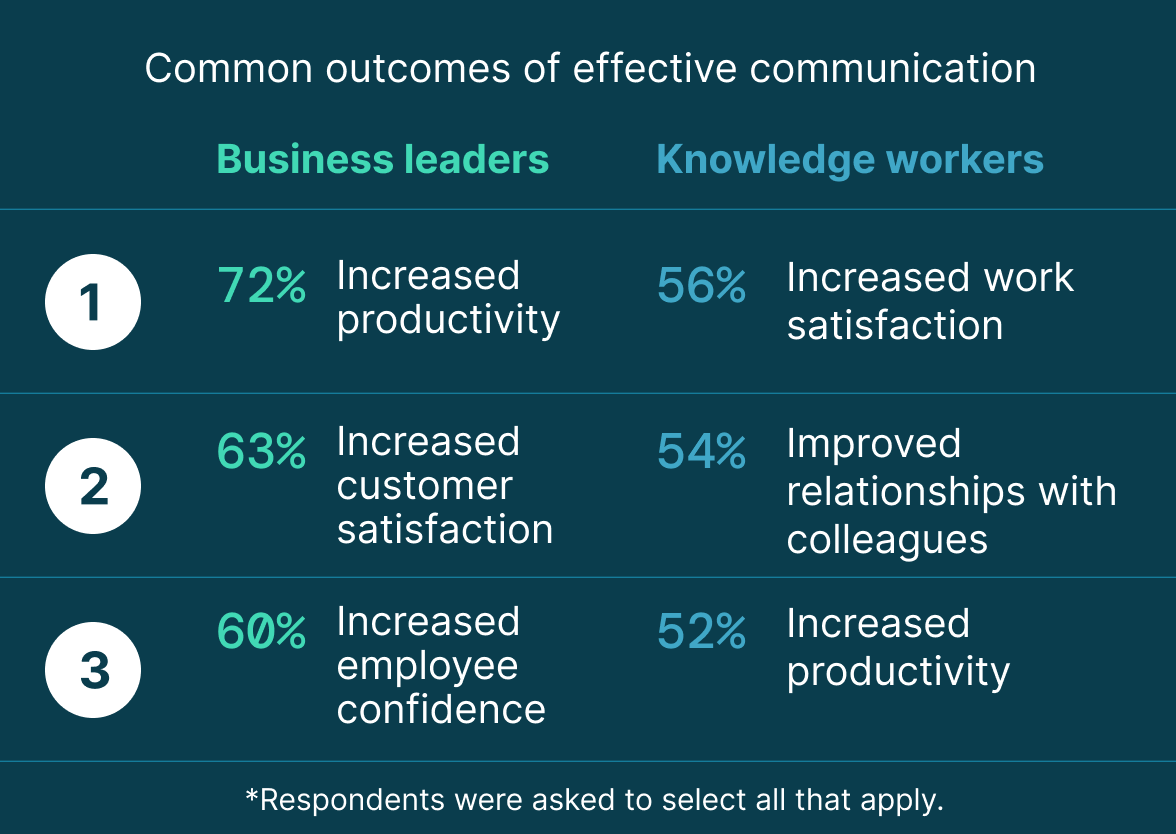
Set positive examples when interacting with peers and team members. Invite questions and suggestions from others while avoiding unnecessary jargon that slows conversations.
You can also improve communication in your small business by:
-
Listening actively. Give your full attention to others regardless of their position or standing in the company. Acknowledge their messages and respond thoughtfully.
-
Taking on feedback. Ask peers and team members for feedback on your management style (specifically the communication aspect) via questionnaires and one-on-one meetings.
-
Using various channels. Get comfortable communicating synchronously and asynchronously through email, phone, instant messaging and voice notes. Avoid becoming too reliant on one channel that only suits some of your team.
Honesty
Unwavering honesty will help you build strong relationships with employees, boosting your bottom line through increased productivity and staff retention.
Set an example by being transparent in all your dealings with team members, peers and customers. When staff know you value honesty and accountability, they’re less likely to hide mistakes and ignore challenges. As a result, they’ll achieve their objectives sooner.
Moreover, Visier found that around half of employees (46%) who trust their employers see themselves in their current positions for five years or longer, compared to only 29% of those who distrust their employers.
Here’s how to be an honest and accountable small business manager:
-
Share company information. Share information with your team regularly, including good news and areas for improvement. Transparency in communication builds trust and respect.
-
Admit your mistakes. Acknowledge errors and discuss what you’ve learned from them. It’ll encourage a culture where mistakes are learning opportunities rather than failures.
-
Encourage honesty in others. Foster an environment where team members feel safe speaking the truth, sharing their opinions and providing feedback without fear of retaliation.
Empathy
Empathy helps build strong, supportive relationships while creating a more compassionate, engaged, productive workforce.
It’s also proven to reduce staff turnover, so you’ll spend less on recruitment and training. In a 2024 Businessolver survey, 88% of employees said they’d stay with their organization if it empathized with their needs.
Show that empathy by being genuinely interested in your team’s physical and mental well-being. Listen to members’ concerns, acknowledge their feelings and prioritize their personal and professional development. It’ll help you connect on a deeper level, improving morale and togetherness.
Here are three ways to become a more empathetic manager:
-
Listen closely. Pay attention to what your team members are saying and respond in a way that shows you understand and care about their perspectives.
-
Show compassion. Demonstrate care and concern for your team’s well-being inside and outside work. Small acts of kindness go a long way.
-
Give time to different perspectives. Try to see situations from your team members’ various points of view. It’ll help you generate new ideas and make more considerate decisions.
Pragmatism
Pragmatism means prioritizing actionable solutions and making decisions based on what is feasible and effective. It’s a quality that helps you navigate the many challenges of running a small business while keeping your team grounded and focused.
Adopt a pragmatic approach by staying flexible and open to change. Be willing to adapt your strategies based on what works best for your business and team in a given circumstance.
For example, imagine your marketing strategy isn’t delivering the expected results. Being pragmatic, you’d analyze the data to identify what’s not working and pivot your strategy instead of sticking rigidly to the original plan.
Pivoting could involve reallocating budget to more effective channels or adjusting messages to better resonate with your target audience.
Improve your managerial pragmatism by:
-
Setting realistic goals. Make all your goals achievable and measurable. Break down larger objectives into manageable tasks to ensure consistent, steady progress.
-
Prioritizing tasks. Focus on the most critical issues first and allocate resources accordingly. It’ll help you manage your time and effort effectively.
-
Evaluating outcomes. Assess the outcomes of your actions regularly and adjust your approach as needed. Learning from experience will help you make better decisions in the future.
Resilience
A resilient leader can overcome challenges with composure and perseverance, inspiring their team to stay motivated and committed.
Cultivate resilience by keeping a positive mindset and encouraging staff to view challenges as opportunities for growth. Lead by example, staying calm and focused in the face of adversity.
For example, if your business faces an unexpected downturn, assess the situation calmly and plan how to address the challenges. Communicate openly with your team about next steps and encourage new ideas.
A proactive approach can improve morale and drive the collective effort to overcome difficulties. Build up your resilience by:
-
Staying adaptable. Be ready to change course when necessary and embrace new strategies to overcome obstacles.
-
Practicing self-care. Take care of your physical and mental well-being to ensure you can lead effectively. Encourage your team to do the same.
-
Learning from setbacks. View failures as learning opportunities, using them to build strength and resilience. Share these lessons with your team to foster a culture of continuous improvement.
Recommended reading

Crisis management in sales: The 6 step plan you need to prepare
How to manage a small business well: best practices
Managing a small business effectively requires strategic planning, intelligent resource management and efficient processes.
Follow these best practices to build a comfortable, productive and thriving business environment.
Build a watertight financial strategy
A robust financial strategy is the backbone of any successful small business, so start by creating a budget that details all your expected expenses and projected revenues.
The exact list will be unique to your business, but you’ll likely have to account for some or all of the following:
| Expenses | Projected revenues |
| Property rent or mortgage | Product sales |
| Utilities | Service fees |
| Salaries and wages | Subscription fees |
| Insurance | Consulting income |
| Marketing and advertising (including websites and mobile apps) |
E-commerce sales |
| Legal and accounting fees | Event ticket sales |
| Office supplies | Advertising revenue |
| Inventory purchases | Grants, funding and other financial aid |
| Taxes | Investment income |
| Loan and credit card payments | Partnership deals |
| Travel and transportation | Sponsorships |
Monitor your cash flow (i.e., revenue) regularly to ensure you have enough to cover operational costs (i.e., expenses). It’s also wise to set aside a reserve fund for unexpected costs like drops in sales, equipment repairs or employee absences.
Financial management tools like Sage or QuickBooks can help you track expenses, manage invoices and generate financial reports to keep your business on solid financial footing.
Surround yourself with great people (and help them develop)
Your team is your greatest asset. Hiring skilled, motivated and adaptable employees will significantly impact your business success.
Build a diverse team with complementary skills and a shared commitment to your business goals. Invest in their development through training and courses to ensure you get the best results that keep them engaged.
You can also improve staff development by encouraging them to try new tasks and roles within the business.
For example, if one of your top salespeople works exclusively on outbound sales, encourage them to observe your inbound sales team, too. This will allow them to build confidence while sharing knowledge across the organization.
Tracking team performance will help you spot the skills and characteristics that help your business the most.
Say all your top performers are excellent communicators. It suggests prioritizing communication skills in hiring and training is important.
If your most productive employees are self-motivated and can work independently, you can adjust workloads and processes to allow more autonomy.
Download your guide to managing teams and scaling sales
The blueprint you need to find a team of superstars and build a strong foundation for lasting sales success
Build reliable processes for every business area
Establish clear and reliable methods for every aspect of your business to streamline operations and build solid foundations for sustainable growth.
Survey respondents in a BOC Group study said process optimization, document management and quality management were the most significant benefits of process management.
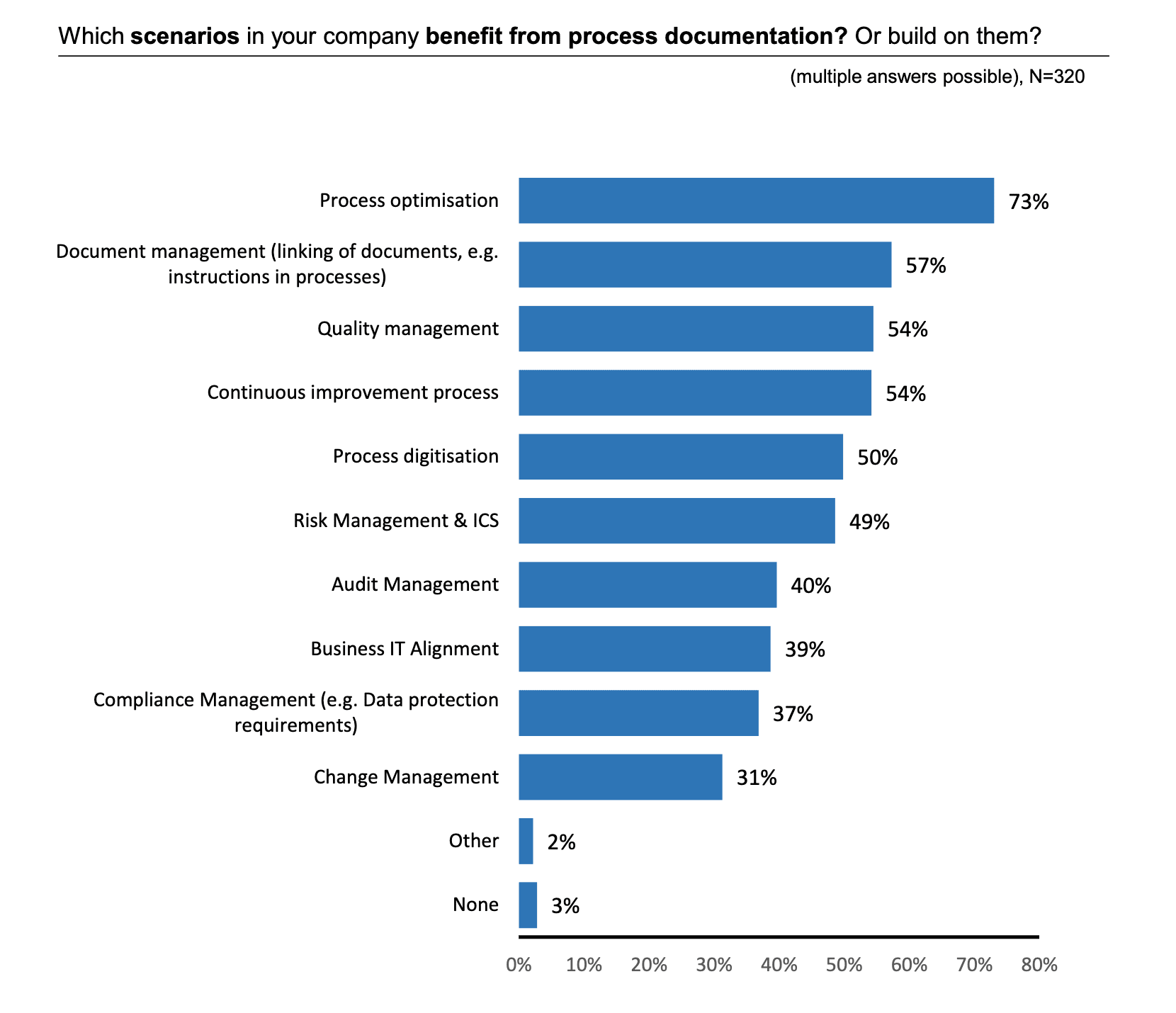
You can standardize and document almost everything your business does, but building a comprehensive library will take time. Start your journey by documenting the following activities:
-
Customer service procedures like handling customer inquiries, complaints and feedback
-
Sales and marketing processes like defining your sales funnel stages, lead generation tactics and marketing campaigns
-
Financial management like invoicing, expense tracking and financial reporting
-
Human resources like recruiting, onboarding and performance evaluations
-
Inventory management, like tracking stock levels and ordering supplies
You can record these processes and others as standard operating procedures (SOPs). SOPs are step-by-step instructions that help staff carry out routine tasks.
For example, here’s what a four-step customer inquiry SOP could look like:
1. Receiving inquiries:
Channels: monitor all channels (phone, email, social media and web forms) regularly.
Acknowledgment: acknowledge receipt of the inquiry within one hour during business hours.
2. Responding to inquiries:
Initial response: provide an initial response within four hours, acknowledging the inquiry and informing the customer that a detailed response will follow.
Resolution: aim to resolve the inquiry within 24 hours. If you need more time update the customer on the status and expected resolution time.
3. Escalation:
Criteria for escalation: if you cannot resolve an inquiry within 24 hours, escalate it to the relevant department manager.
Follow-up: keep the customer informed throughout the escalation process.
4. Closure:
Confirmation: confirm with the customer that their inquiry was resolved.
Documentation: log the inquiry details and resolution steps in the customer service database for future reference.
Storing a library of SOPs in an easily accessible project management tool ensures everyone understands their roles and responsibilities. It improves efficiency, minimizes errors and allows your business to scale sustainably.
Automate repetitive tasks
Automation saves you time, reduces mistakes and allows your team to focus on more creative and demanding work, like tailoring customer experiences and supporting new employees.
It’s proven to increase productivity in various areas. Our State of Sales and Marketing Report revealed that companies that automate the maintenance of sales data are 11 percentage points more likely to hit their targets than those that do it manually.
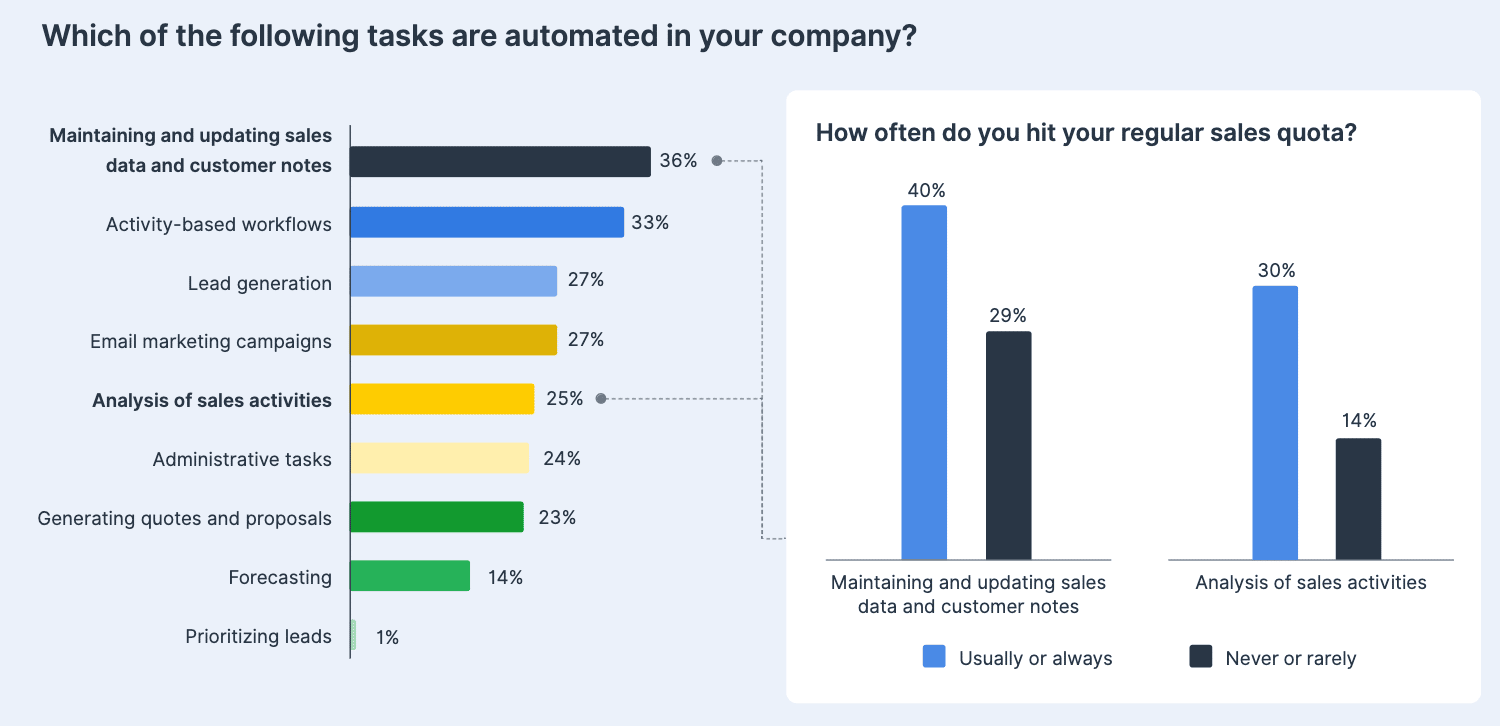
Start by identifying repetitive tasks to automate. Check whether the tools you already use can handle the work or whether you’ll need new technology.
Among the business operations you can automate fully or partially are:
-
Email marketing, like distributing emails at different customer journey stages
-
Social media marketing, like posting new content and replying to followers
-
Sales workflows like follow-up emails, lead generation and performance reporting
-
Invoicing and billing, like tracking payments and sending reminders
-
Human resource management like onboarding, payroll and performance reviews
For example, using CRM software to automate follow-up emails can improve customer engagement without requiring manual effort. After spending a few minutes configuring your automation triggers and responses, you can save hours every week.
Recommended reading

What is marketing automation?
Choosing the best small business management software: 3 invaluable tools
Whether you’re a new business owner running a startup or the manager of an already successful business, you’ll need a few tools to manage data, workloads and company performance.
According to a Zylo study, the average small business (1–500 employees) uses 162 applications.
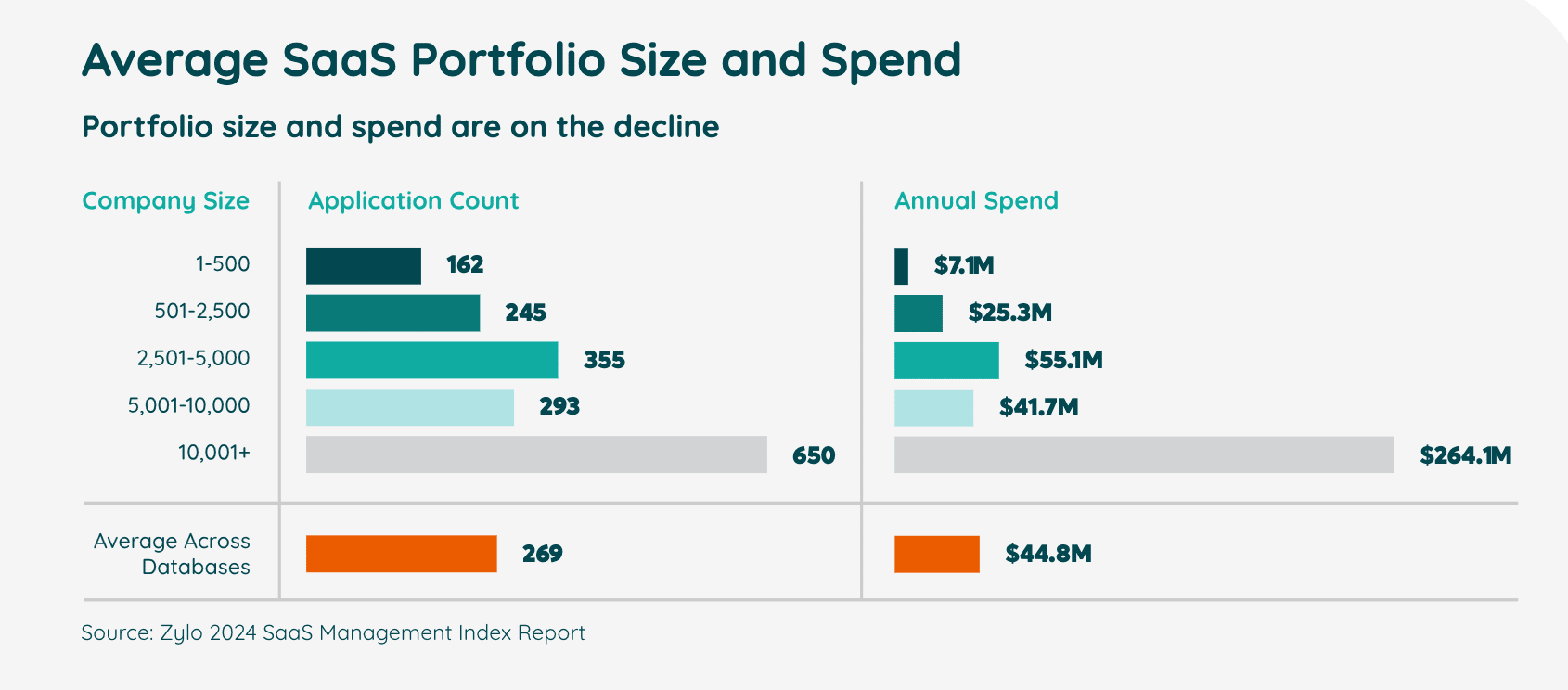
However, some tools are more valuable than others and investing too heavily in the wrong types can drain your budget.
With that in mind, prioritize the following software for small business management success.
Customer relationship management (CRM) software
CRM software helps you manage interactions with current and potential customers. It organizes buyer data, tracks sales activity and acts as a central reference pointfor all sales, marketing and support staff.
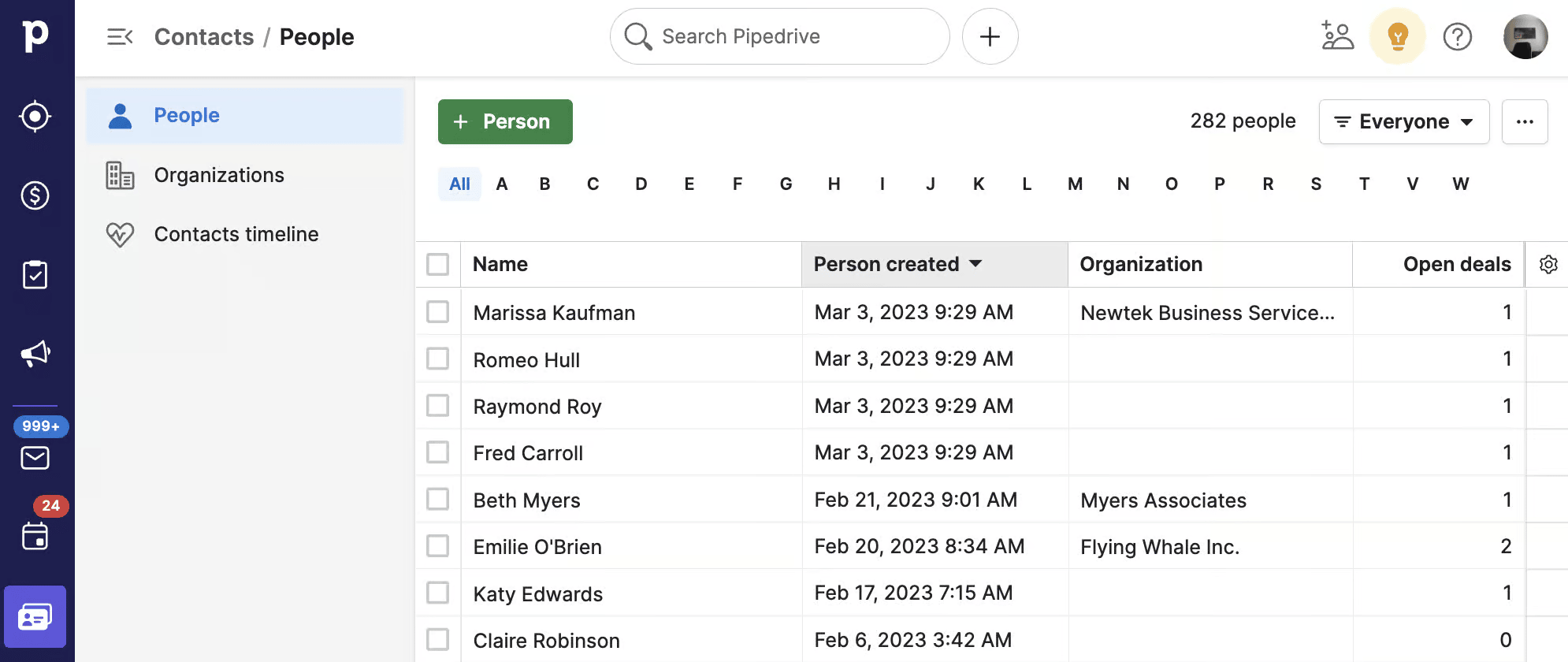
By keeping all customer insights in one place, a CRM enables you to provide personalized service while improving sales and retention.
TrekkSoft used Pipedrive – a cloud-based sales CRM – to target marketing campaigns based on geography and industry.
The company utilized Pipedrive as the database for all its leads and Pipedrive’s filters to create targeted segments.
With integrations for Zapier (an automation app) and email marketing software, TrekkSoft’s marketers can send highly tailored emails to specific segments for more meaningful and valuable interactions.
VP of Sales Robert Lederer is pleased with the results:
Project management software
Project management software is vital to keep your team organized and ensure projects stay on track.
It helps you plan, execute and monitor tasks and deadlines easily so everyone can see what they need to do, without work falling through the cracks.
Many project management tools are available, so you’ll need to choose one that fits your needs and circumstances.
For example, Asana has distinct functions for staff and leadership, making it best suited for small businesses that manage complex workloads for larger teams.
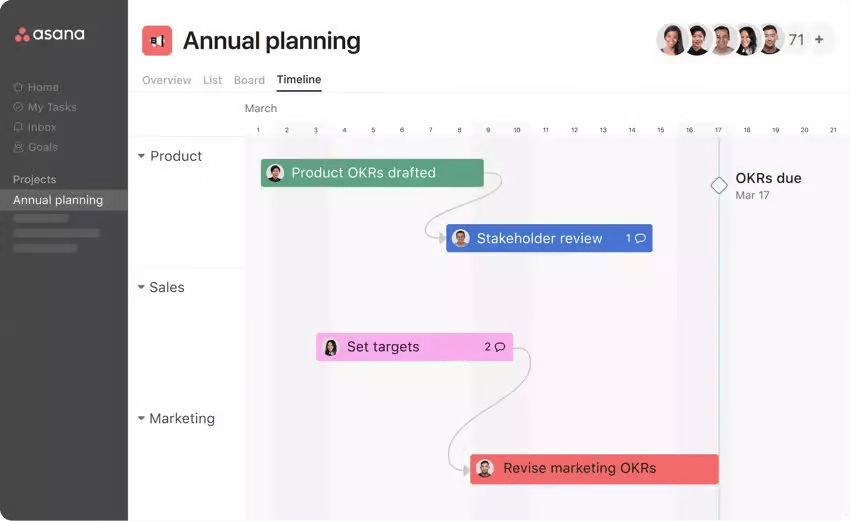
As a manager, you’ll spend the most time in Asana’s Projects, Workspaces and reports. Your team will rely on timelines and to-do lists to track their responsibilities in real time. You’ll come together via project- and task-specific comment threads and messages.
One Asana user, the online fashion retailer Showpo, increased overall efficiency by 30% by using project templates to organize its work. The software’s flexibility meant all Showpo teams could use it to everyone’s benefit.
Trello is a more straightforward option, ideal for running a small business with a few employees. Trello utilizes customizable Kanban boards and project templates, making it easy to use even for newcomers to project management software.

However, it lacks the advanced reporting capabilities of some of its competitors. If performance tracking matters to you and you don’t have another solution, factor that in.
Other popular project management tools include ClickUp, Notion and Monday, all of which integrate with Pipedrive.
Email marketing software
Email marketing software makes it easy to create, manage and measure email campaigns. Some even allow you to automate repetitive tasks like reporting to speed up your workflows.
Great email marketing software helps you reach your audience, promote your products and nurture customer relationships with minimal effort.
Pipedrive combines CRM with email marketing through Campaigns, a tool that offers email analytics, design and segmentation features in one straightforward interface.
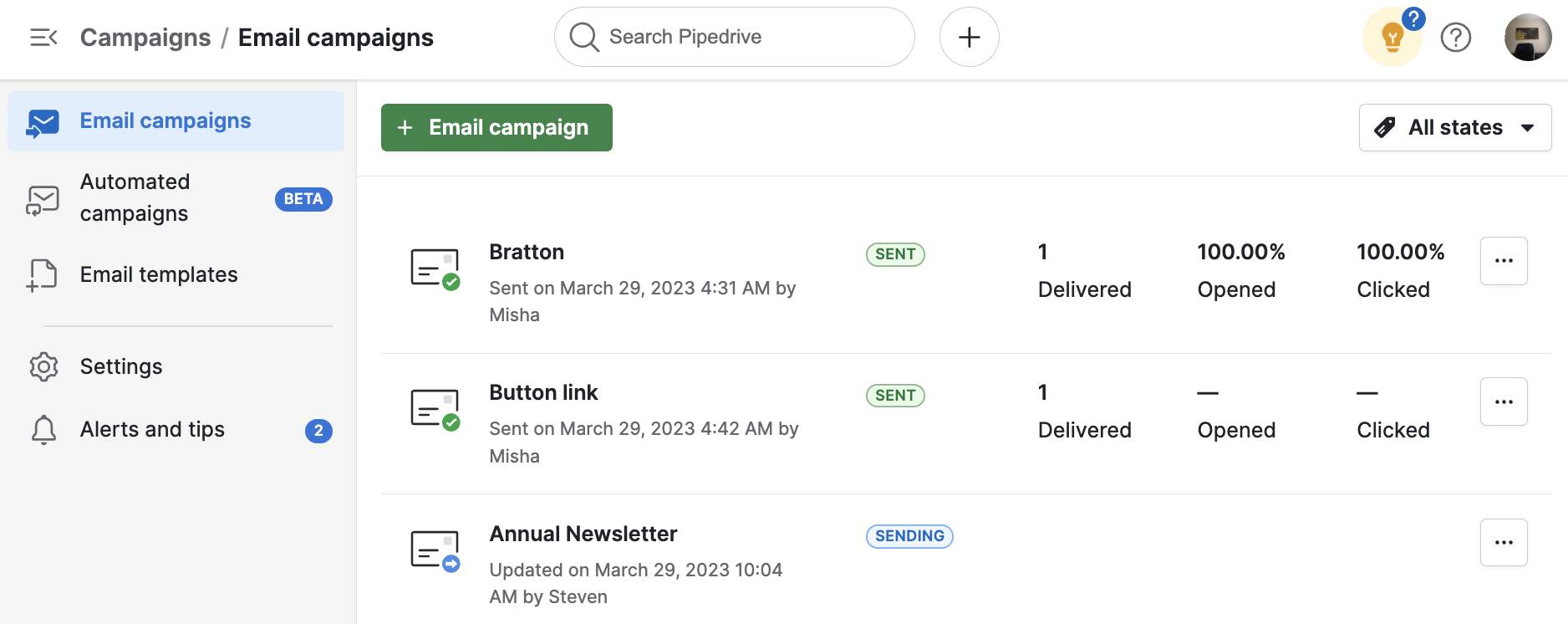
Trainify is just one of the small businesses that achieved their goals using Pipedrive’s email marketing software.
The company created multiple targeted campaigns, saving two hours per week by automating the data flow between its sales and marketing efforts.
CEO Viktors Pedčenko described his experience of using Pipedrive and Campaigns:
Campaigns is a Pipedrive add-on, so the two tools work perfectly together. If you already use another email marketing tool, it will likely integrate with Pipedrive, too. Check out the Pipedrive Marketplace for more information on integrations.
Recommended reading

14 business management software solutions that increase efficiency
Final thoughts
Management quality impacts the success of every small business. Following the advice in this guide is the simplest way to outperform your less organized competitors.
Build solid foundations from reliable processes, set ambitious but realistic goals and stay open to learning as you go. You’ll soon have a loyal team and customer base that generates profit consistently.
If Pipedrive is of interest and you'd like more information, please do make contact or take a look in more detail here.
Credit: Original article published here.
